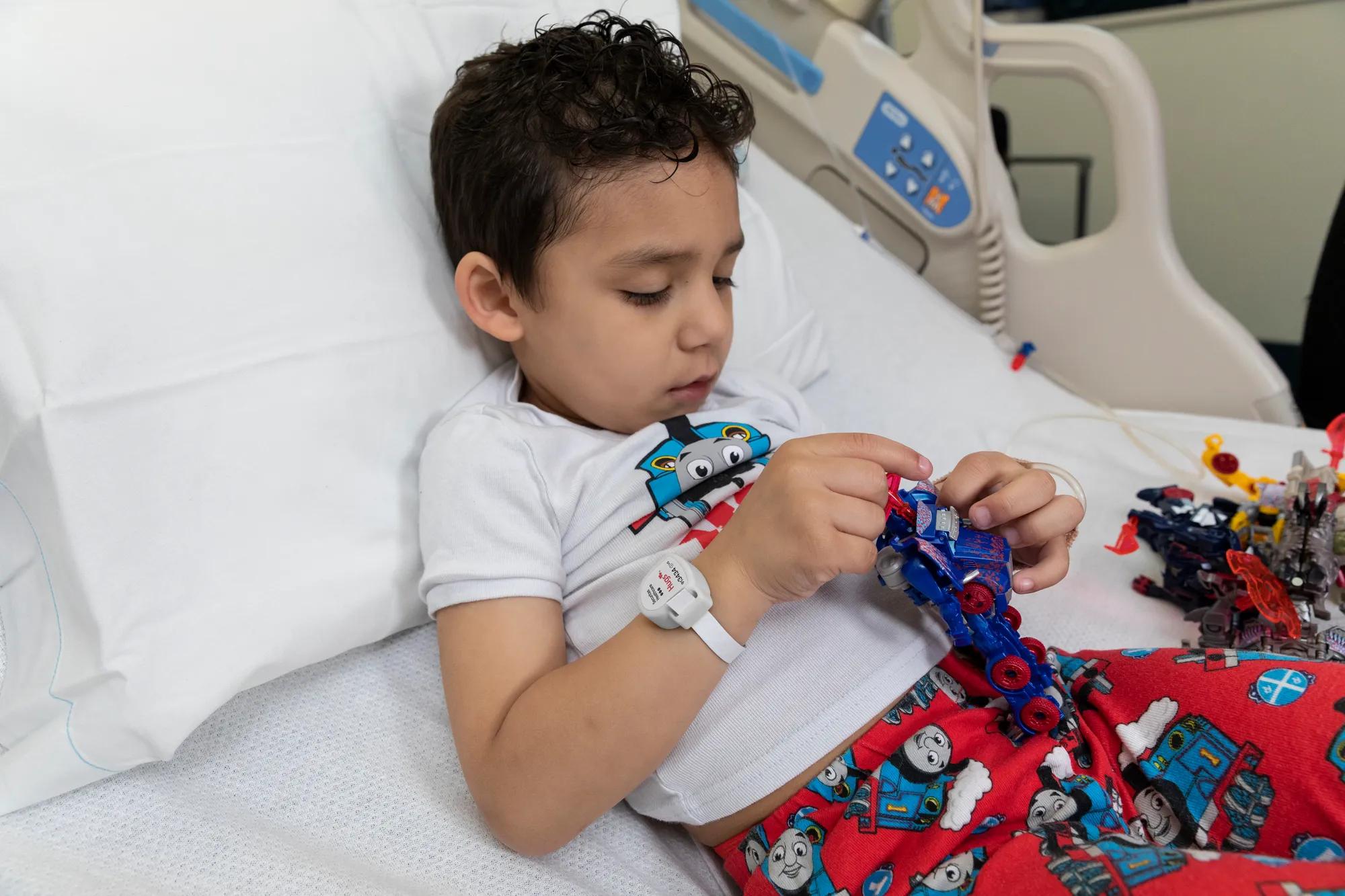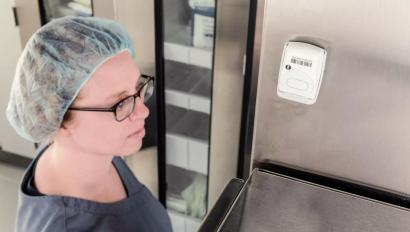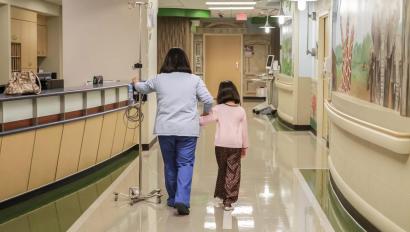Q&A Session: Clinical Insights on Infant and Pediatric Patient Security

Alyssa Bostwick, Vice President of Operations and Chief Nurse Executive at Golisano Children's Hospital, discusses infant and pediatric patient security from the clinical perspective.
Alyssa Bostwick is Vice President of Operations and Chief Nurse Executive for Golisano Children’s Hospital, which is part of Lee Health, one of the largest public, not-for-profit health system in Florida.
From January 2018 to August 2020, Bostwick served as a program development coordinator. In that capacity, she was part of a multi-disciplinary team that explored and implemented a new patient safety platform for infant and pediatric patients in 11 clinical units spanning Golisano Children’s Hospital and HealthPark Medical Center.
Recognizing that other clinical leaders face many of the same safety and security challenges, Securitas Healthcare asked Bostwick to share her perspective on the “what,” “why” and “how” of patient safety. Here are excerpts of the conversation.
Can you start by telling us about Lee Health’s philosophy of patient safety?
From the time I joined Lee Health over six years ago, it has been clear that quality and safety are top priorities. I was impressed by how patient safety is just part of everything we do every day. We have a dedicated Public Safety team that is very well integrated into each of our hospitals and organizations. We also have a team of people where everyone is thinking about and taking action to keep our patients safe. Public Safety officers and nurses routinely communicate about risks, we stay vigilant and watch for signs, and everyone works together to prevent those risks from turning into incidents.
What are some of the unique risks when it comes to protecting infant and pediatric patients?
It’s not just infants that are at risk. Every child that walks into the building can be at risk. For infants, there is the traditional risk of stranger or family abduction. Also, we have some patients whose families are under investigation by child protective services, and that can pose additional risks. Older pediatric patients could try to simply get up and leave. And, sadly, human trafficking has become a very prevalent risk that we are continually working to mitigate.
Don Edge, our Director of Public Safety, helped me understand that the scariest risks are the ones you aren’t yet aware of. That’s why we treat patient safety as a mindset, and we’re always thinking about how we can ensure that the babies and kids in our care are safe and secure.
Why did you decide that you needed to update your infant security?
The system we had been using for years just wasn’t working as well as we’d like. We originally thought that was because the system had been retrofitted for our old facility. But even after we moved to our brand-new building, the problems persisted. We were still averaging 15 false or ghost alarms every day, on the phone for hours with the vendor, so it’s no surprise that our nurses were fed up and frustrated. There was a fair amount of skepticism about a new solution. From a patient or family perspective, it was disruptive. Any patient who was in the hospital longer than the day would notice. Doors would lock and you couldn’t get out/in constantly.
What were some of the key clinical considerations that guided the decision to implement Hugs Infant Security?
I was part of a team that also included members from Public Safety and Information Systems, and together we evaluated numerous options. We ended up narrowing it down to the Hugs Infant Security Solution from Securitas Healthcare because of the newer technology (Wi-Fi) and reliability. Technology mattered because the dated technology of our old system (RF) was the root cause of the alarm fatigue and frustration my team experienced. We also liked that we could band all patients at the bedside and see where they are within our facilities.
Even though we were confident Hugs was a good choice, we didn’t move forward until we gave clinicians a chance to “kick the tires.” Once they saw a demo, held the tags and asked their questions, the skepticism began to melt away.
How did you approach getting your staff onboard with the new system?
We asked the Securitas Healthcare Clinical Services team a million questions—bathing, what happens when it gets wet; banding and rebranding; admit/discharge; transport; alarm management; support—just about anything you can think of. And, our line of questions was tough especially because of our distrust of the previous system. The people who were involved in those early demos and discussions became unofficial Hugs ambassadors and trainers. It was so much more powerful than leaving everything to one or two nurse educators. It really helped build trust and positive momentum on the clinical side.
One of my biggest lessons learned was around training compliance. The Securitas Healthcare Clinical Service team provide comprehensive in-person classes and online courses. For our first roll-out in the Mom-Baby unit, staff participation in training services was not 100%. We experienced some issues during the first couple of weeks that we recognized would have been mitigated with training. After this, we pushed for 100% participation for bedside nurses and managers, and every unit rollout was smoother with fewer alarms because they were trained properly. Since we use the same patient security system for all in-patient units, the online training courses are perfect for new hires.
How did you find the initial launch period for Hugs?
In terms of the core functionality, Hugs worked very well from the beginning. Our nurses loved being able to pull up the application at the patient’s bedside, and of course everyone was thrilled that there are no more nuisance alarms. During initial infant abductions drills, we didn’t tell the staff because we wanted to simulate an event as real as possible. The nurses found the patient and stopped the abduction before it even escalated to the overhead alarm. Our processes and system allowed our staff member to react quickly and effectively. It worked so great I wondered, “Did the drill actually happen?”
We did do some in-depth simulations of a patient security incident to see how the resulting lockdown might affect other parts of the hospital. We quickly realized that a lockdown could create a different set of patient safety risks, so we fine-tuned some of our processes and procedures.
What’s been your experience with protecting pediatric patients?
For the pediatric patients, we were originally concerned around toddlers playing with the band or adolescences trying to pull off the band. To our surprise, we haven’t seen the issues we thought we would. I think one reason is we partner with our families. We educate them on our safety measures—and if the kids are old enough, we educate them too. They know we are invested in the safety of their child.
What advice would you offer to other clinical leaders who are exploring new and better ways to keep patients safe?
The most important thing is to make patient safety part of everything you do. It’s not just about technology or just about protocol or training. It’s all of the above. It needs to be part of your culture, and you need a full plan and set of tools for how you manage it. For us, that includes the Hugs platform, along with daily meetings about Public Safety risks, formal safety reporting and constant interactions between clinical and Public Safety resources.
When you’re exploring the technology that will support that comprehensive approach, be sure to bring clinical, IT and security resources to the table. Everyone will have important expertise and unique contributions that will make your project a success.
























